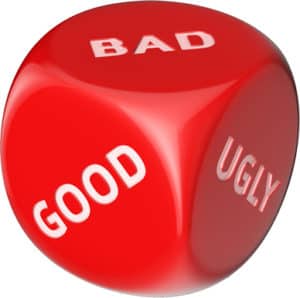702-660-7000
702-660-7000


We are always getting new material proposed to us by the insurance companies about new products or marketing suggestions. Recently an email came in, from a company we don’t represent, suggesting that permanent life insurance is a great way to sustain your income when the market drops and you find yourself eating away at the principal portion of your investments instead of living off the growth.
This, actually is a fact! You can sustain a higher standard of living if, during a market correction, you draw funds from or against your life insurance instead of continuing to distribute funds from your invested accounts, destroying principle. But that was the end of the facts contained in this email. And the reason was, they begin to recommend a certain Indexed Universal Life policy as a way to provide those guaranteed funds you’ll want to rely upon during a future market correction.
Here are some reasons why such a plan could fail and hurt big time down the road.
Therefore, about the time you need to draw from your life insurance policy to offset the income distributions that you can’t take from your investment without destroying your principle, your life insurance policy is no longer adding the value (do to the ever-increasing cost of the term insurance platform IUL is built upon). That’s ugly.
Fortunately, this problem is abated by simply purchasing and funding the right product to begin with and that is participating whole life insurance (PWLI). PWLI provides you guarantees backed up by the company as well as the right to share in the profits of the company after those guarantees are paid each year. That’s good.
Here is an example of what could happen. You fund a life insurance policy at $3,010 a year for 40 years. At age 66 you find yourself needing to pull $40,000 annually from your policy because a market correction has just occurred and you don’t want to down draw the principle you’ve saved outside of your policy.
If your policy was an IUL and growth took place as illustrated using the maximum allowable rate over the past 40 years, then you have no guarantees there will be any money to use from your policy as the guaranteed cash value is $0.00 even though you have paid $117,376 into this policy since you were 26 years old.
Perchance, the non-guaranteed returns illustrated may have occurred in the policy and that means you might have $126,199 of accumulated cash value to draw from at age 66. But, at $40,000 a year, you will be out of money in the policy in just a little over 3 years. After that, your policy will lapse having no more accumulated cash values and no insurance coverage on your life.
Of course, you could have purchased a Participating Whole Life Policy (PWLIP) for the same premium of $3,010 a year and your guaranteed cash values at age 66 would be $222,260 instead of zero like in the IUL policy. With dividends earned over the years, your accessible cash values could be more than double of what is projected to be there for you in the IUL policy ($284,970 instead of $126,199) and of course the dividends paid on the PWLIP can be used to offset the interest on the $40,000 policy loans you need to take to live on during a market down turn. This allows you to protect the principle you have accumulated in other assets over the years instead of spending them down and risking running out of money before you die.
Furthermore, the PWLIP won’t lapse like the IUL policy will because there are no premiums required after age 66. That means, the guaranteed cash values keep accumulating as do any dividend payments. In fact, due to the dividends, your PWLIP provides you the opportunity to earn, your policy will not lapse after you use this money but will continue to provide you with life insurance coverage for the rest of your life, as long as the company keeps earning a profit, which historically has happened now for over 100 years consecutively.
The cold hard fact is, owning an IUL policy means that you are assuming a risk that the insurance company would gladly accept for you if you simply purchase a PWLIP instead of an IUL. By assuming that risk when you purchase an IUL, you accept the liability that you could run out of money and coverage before you really plan on doing so. And that’s bad!
Not all permanent policies sold today can guarantee that you will have coverage until the day you die. Only PWLIP’s give you this iron clad guarantee:
There is nothing bad or ugly about that! Its all good.